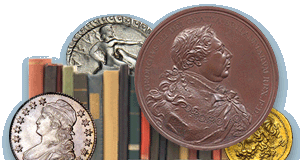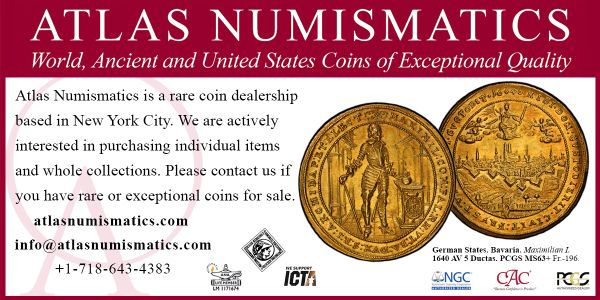
PREV ARTICLE
NEXT ARTICLE
FULL ISSUE
PREV FULL ISSUE
THE COINS OF DOMITIANMike Markowitz wrote an article in CoinWeek on the coins of Domitian. An excerpt is found below. -Garrett Titus Flavius Domitianus – better known as Domitian – has gotten a raw deal from historians, thanks largely to Rome's ace gossip columnist, Suetonius (lived c. 69-122). Born on October 24, 51 CE at Rome, Domitian was the younger son of Vespasian, who ruled as Emperor from 69 to 79. For much of his life he was overshadowed by his brother, the popular Emperor Titus, who was 10 years Domitian's senior (17 centuries later, Mozart wrote an opera celebrating the "clemency of Titus"; poor, nasty Domitian hasn't gotten any operas). Following the premature death of his brother at the age of 41 (September 13, 81), Domitian was proclaimed Emperor by the Praetorian Guard. He would rule for 15 years until he was assassinated in a palace coup. The abundant collectible coins of Domitian in all metals illustrate a critical period in Roman imperial history. Domitian and Titus as Caesars Vespasian was victorious in the chaotic civil war that followed the death of Nero (the "Year of Four Emperors"). He awarded his sons the title of Caesar, which in this era meant something like "junior co-emperor" and "designated successor". A gold aureus of Vespasian datable to 71 CE shows his two sons on horseback, with the inscription "Titus and Domitian, Caesars and Princes of the Youth". Princeps juventutis ("Prince of the Youth") was an honorary title dating back to the Roman Republic that was awarded to young men who performed an ancient equestrian ritual. Temple of Vesta During the reign of his father, coins were struck in the name of Domitian as Caesar. A notable example has a reverse depicting the Temple of Vesta in Rome, which still partially stands. This circular structure housed the sacred flame tended by the Vestal Virgins. This coin, which may come from the famous Boscoreale Hoard of 1895, has a pedigree dating back to the 1909 sale of the collection of British archaeologist Sir John Evans. In a 2024 U.S. auction, it realized $20,000 against an estimate of $15,000. Minerva Aureus Domitian had a special devotion to the cult of the goddess Minerva. After he became emperor, she appeared on a high percentage of his coins. A gold aureus datable to 82 CE bears the head of Minerva on the reverse, wearing an elaborate crested helmet and body armor, emphasizing her role as a war goddess. She is surrounded by an inscription listing some of Domitian's titles, carried over from the obverse.
To read the complete article, see:
Wayne Homren, Editor The Numismatic Bibliomania Society is a non-profit organization promoting numismatic literature. See our web site at coinbooks.org. To submit items for publication in The E-Sylum, write to the Editor at this address: whomren@gmail.com To subscribe go to: Subscribe All Rights Reserved. NBS Home Page Contact the NBS webmaster 
|



